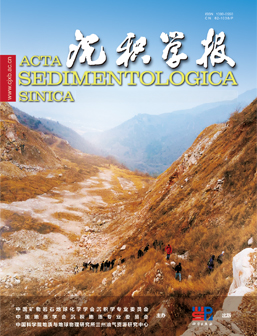The Influence of Reservoir Forming Dynamics on Shale Oil and Gas Accumulation: A Case Study of Lucaogou Formation in Jimusar Sag, Junggar Basin
doi: 10.14027/j.issn.1000-0550.2023.068
- Received Date: 2023-07-10
- Available Online: 2023-09-16
-
Key words:
- Lucaogou Formation /
- pressure differences between source and reservoir rocks /
- laminar structure /
- sweet spot /
- reservoir space
Abstract: Abstract: The pressure differences between source and reservoir rocks is not only the driving force for unconventional oil and gas accumulation, but also an indispensable key content in the study of the genesis of shale oil sweet spots. In addition, laminar structures are widely developed in continental shale, and the degree of development results in differences in the accumulation dynamics of reservoir rocks, which affect the accumulation of shale oil and gas. However, there are relatively few studies on the accumulation dynamics of shale oil. The sweet spot section of the Permian Lucaogou Formation in the Jimusar Sag was taken as the research object, and the intrinsic relationship between the development degree of laminar structure and shale oil and gas accumulation was revealed from the perspective of accumulation dynamics. Through evaluation of source rocks, classification of petrographic types and characterization of pores, etc. The characteristics of source rocks, different types of reservoir rocks, and source-reservoir assemblages in the study area were obtained. Using the equivalent depth method and fluid inclusion simulation, the pressure difference between source rocks and reservoir rocks during the accumulation period was recovered, and the accumulation dynamics of different types of reservoir rocks were obtained. The results show that the study area is dominated by source-reservoir interbedded combinations, and the hydrocarbon generation of high-quality source rocks creates a strong source-reservoir pressure difference between source and reservoir, which promotes the continuous migration of oil and gas to adjacent reservoir spaces; Interbedded silty and argillaceous laminae are widely developed in the reservoir rocks, which constitute a large area of frequent contact between source and reservoir. The degree of development results in differences in the accumulation dynamics of different types of reservoir rocks, and the laminar reservoir has developed laminar structure and the migration distance of oil and gas is shortened, so that it has stronger accumulation power and oil-bearing property. The development of laminar reservoir rocks in the lower sweet spot is a favorable area for studying oil and gas migration and accumulation in the shale sweet spot.
| Citation: | The Influence of Reservoir Forming Dynamics on Shale Oil and Gas Accumulation: A Case Study of Lucaogou Formation in Jimusar Sag, Junggar Basin[J]. Acta Sedimentologica Sinica. doi: 10.14027/j.issn.1000-0550.2023.068 |






 DownLoad:
DownLoad: